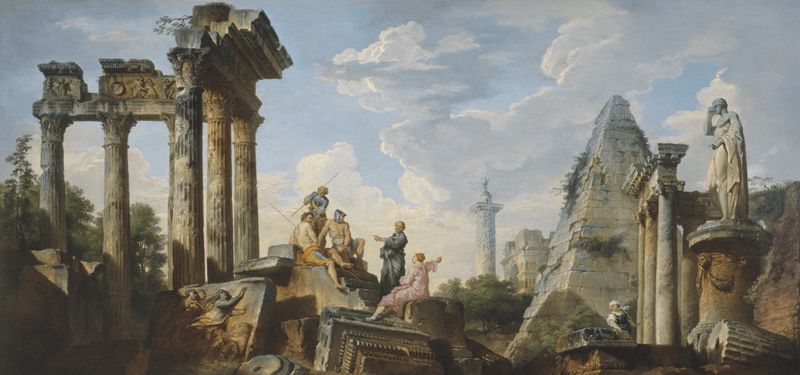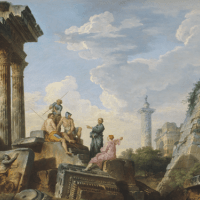Come check out level six of the North Building of the Denver Art Museum where you can now see an imaginary view of Rome by eighteenth-century Italian master Giovanni Paolo Panini. The subject is a capriccio (literally, a caprice), indicating a composition where real and invented architectural structures are brought together in imaginary settings.
Rome, with its evocative ruins, was the ideal backdrop for pictures to which the artist often included figures from a mythological or historical event to enliven the composition. This is the case with the DAM picture, a horizontal scene with Roman ruins including the pyramid of Caius Cestius on the right and Trajan’s column in the background.
Giovanni Paolo Panini was born in Piacenza (Emilia-Romagna region, Italy), but spent his whole artistic career in Rome. As was the case for Canaletto (see his view of Venice hanging in the gallery to the right of the Panini), his initial training included stage design. Around 1716, however, he began focusing on painting vedute (views), a genre in which he excelled, obtaining success among foreign travelers looking for mementos to bring back to their countries and collections.
While in the gallery, also do not miss an installation of five works by impressionist artist Alfred Sisley. While Panini’s view is a product of his imagination, Sisley strived to paint the nature before him, without embellishments or idealizations.
Image credit: Giovanni Paolo Panini, Capriccio with Roman Ruins and Figures(detail), c. 1740-1760, oil on canvas. Denver Art Museum: Gift of The Simon Guggenheim Memorial Collection, 1962.100.


